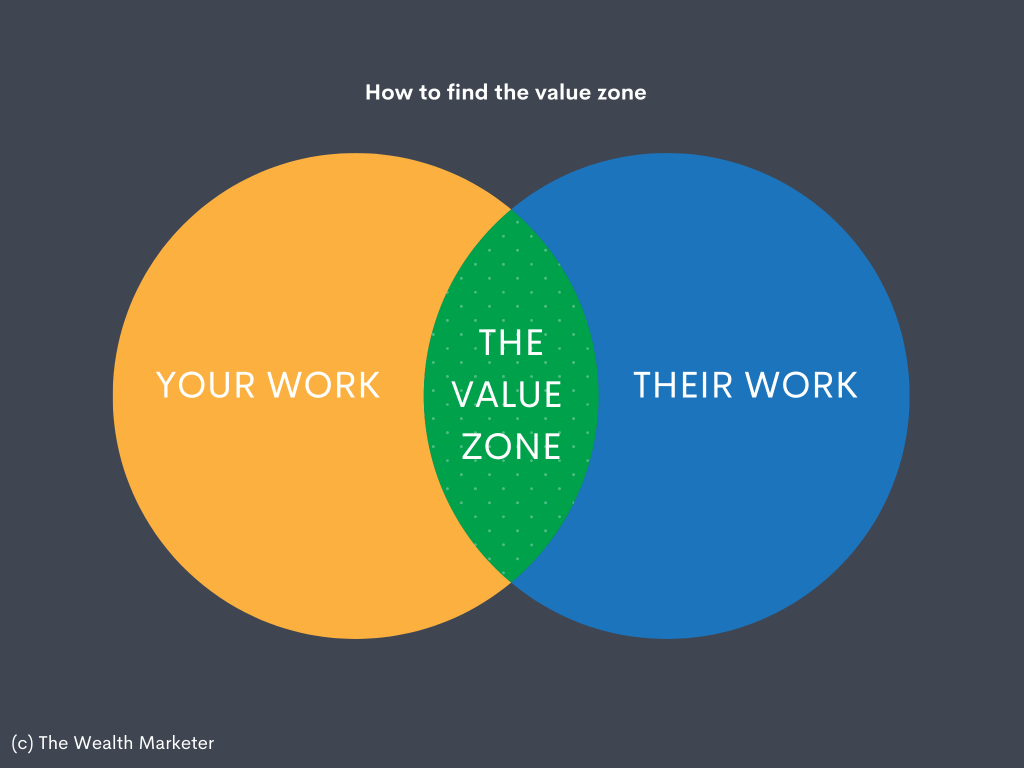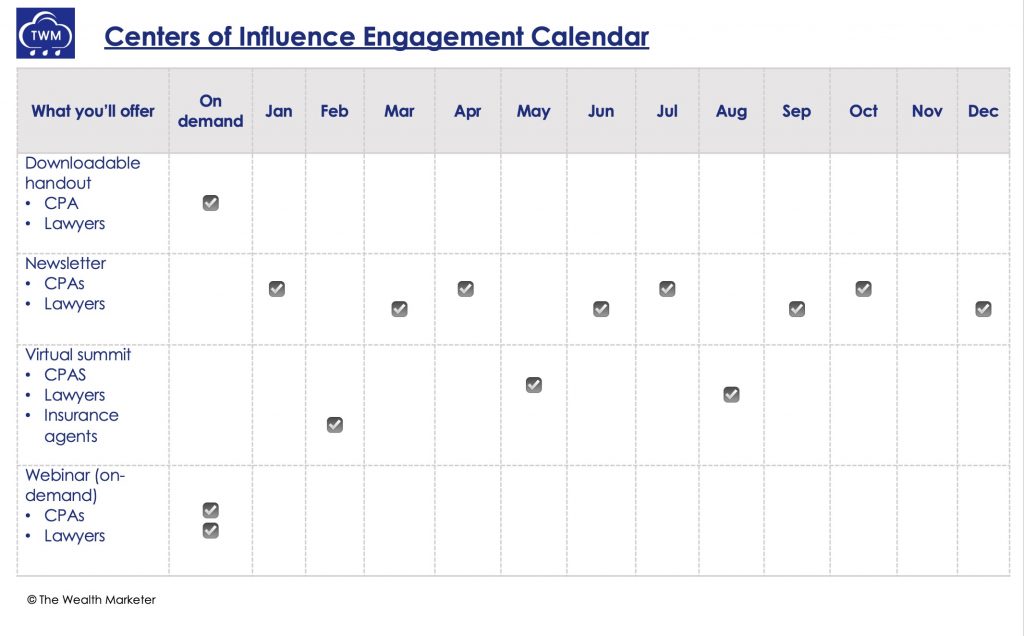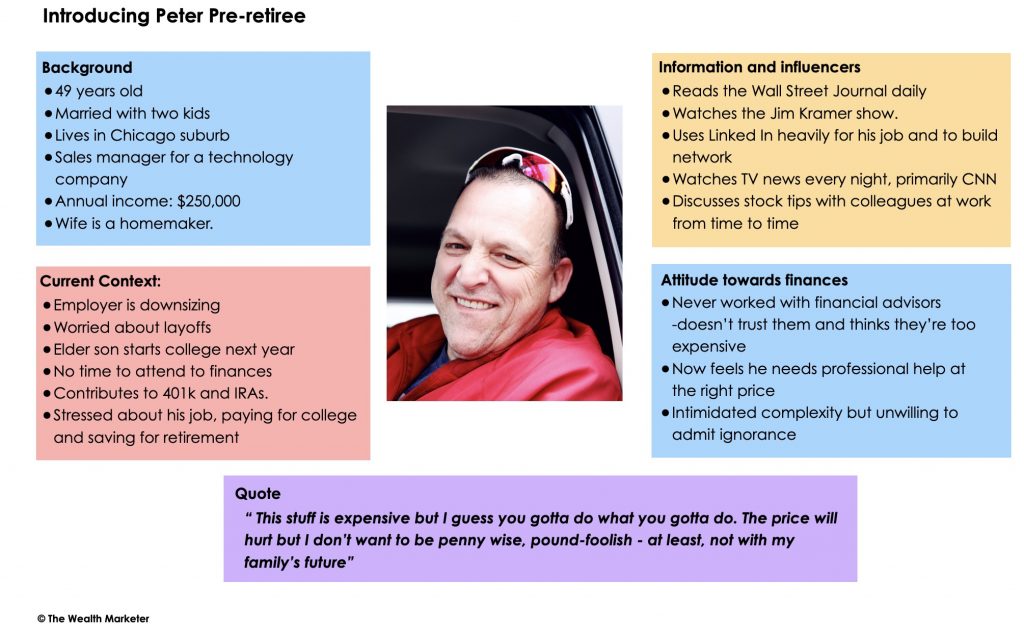
Have you struggled to build a really effective referral network for your business?
You already know the value of a strong referral from a trusted professional, especially in the financial field – CPAs, attorneys, and insurance professionals, for example.
But if you’ve made any effort at all before, you know how hard it is to get even their attention, leave alone their trust.
- They’re already bombarded with solicitations
- They’re too busy with client work and/or prospecting
- It’s hard to help them see the value for them in working with you.
But there’s a simple way to accelerate that process.
The key is to build a system that generates its own momentum.
If you feel daunted by the thought of starting from scratch, we boiled down the whole process into five steps you can start working on right away.
Let’s dive in.
Step 1: Identify Your Referrers
Begin by narrowing down the list of professionals who are most likely to be working with your ideal prospects. Typically these are:
- CPAs
- Attorneys – estate, divorce and family law, elder law, business law
- Insurance specialists – life insurance, insurance brokers for small businesses
Pick the top one or two professions who are most likely to refer new clients to you, especially if they’ve already done so in the past.
Ideally, find out who already serves your existing clients in these capacities. By identifying them, you’ll start off with a readymade pool of potential referrers you can help right away.
Step 2: Find the Value Overflow Areas
Next, think about where there is an overlap between your work and the work of these professionals.
Specifically:
- When do their clients’ financial affairs give them headaches that you can help solve?
- What issues cause bottlenecks or roadblocks for this profession that you can help with?
- What work do you do for your clients that makes their lives easier?

Let’s see how this works with CPAs, for example:
Where clients’ financial affairs create complications for CPAs:
Clients’ investment transactions may create tax complications for their tax accountants Or they may be making retirement financing decisions with only cash flow implications in mind, not the tax impacts.
Reaching out to your clients’ other service providers will help you identify these areas of stress, and start adding value instantly by providing know-how and perspectives to help
Where CPAs face bottlenecks:
Your clients may have significant stock transactions as part of their compensation package. The tax impacts may be complex and may become evident to the client only at tax-time, creating undue delays to their accountants.
Your expertise and experience puts you in an excellent spot to identify these and help mitigate them in advance.
Where your work makes the CPA’s life easier:
As a wealth professional, you already consider tax implications carefully in developing suitable strategies for your clients.
For example, in developing retirement distribution strategies, you probably consider not only cash flow but also the taxability of these distributions. And of course, you’re probably already doing meaningful tax-loss harvesting for your clients’ portfolios.
Create a simple content agenda for each profession based on this brainstormed list of ideas – this will help you build content effortlessly over the long haul.
Step 3: Set Easy Interaction Formats
For your referral network to work, your referrers must be attuned to hearing from you consistently on matters that help them, inform them and make their lives easier.
The best way to do this is to find a couple of communication formats that are easy and natural for you. Once you find these, stick to them for at least 6-8 months.

Here are some choices:
- Webinar / Zoom conference call
- Personal letter
- Printable handouts for them or their clients
- Newsletter / commentary or simple letter with your own professional perspective
- 2-5-minute audio or video clips recorded on your phone camera
- Slide presentation
- Teleconference or virtual summit where professionals can ask you any financial topic-related questions for 30 – 60 minutes
As you hit your stride over time, consider expanding into no more than one new format at a time, until you’ve normalized that mode of communication
Step 4: Set a Plan
Bring your engine to life with a planned calendar and 2-3 simple metrics to monitor how you’re doing.
Here is an example:

Build these into your calendar to ensure you stay on track.
Let’s jump to the best part: capturing the benefit.
Step 5: Harvest the Benefit
All this hard work isn’t worth much if you can’t reap the harvest of what you’ve sown.
For your network to be of value, your professional colleagues must know you, like you and value your contribution to their work.
Take these steps to stay top-of-mind with your referrers:
- Create a separate mailing list for COI’s (this is a must-have)
- Consider building a separate section on your website for your COI’s.
- Provide access to valuable content (such as on-demand webinars, your handouts, etc.) in exchange for their email address
- Increase visibility with low effort via a quarterly newsletter, for example, that helps your entire network with limited effort on your part
You’ll soon see that the professionals are reaching out to you for help and more collaboration – because you’re making every interaction beneficial to them and to their clients.

Do Even Better
Take your system to the next level with these bonus tips:
- Start by working with the professionals who already serve your clients. Ask them what challenges they face with your clients, and what you can do to ease their work.
- Create simple 1-2 page evergreen handouts that your professional colleagues can use for themselves or hand out to clients: provide information, tips and tools that give instant value.
- Run joint events, webinars or Q&A with your referrers for their clients on areas of your common expertise – the implied credibility you get is priceless.
- Share the content you create for your clients with your professional referrers – jointly branded with you, that they can share it with their clients – this way, you both win, and their clients end up getting to know and trust you more.
You now have the best-kept secrets of the greatest referral network builders.
What profession are you going to choose to build out your referrals? What’s the first action you’re going to take?



























